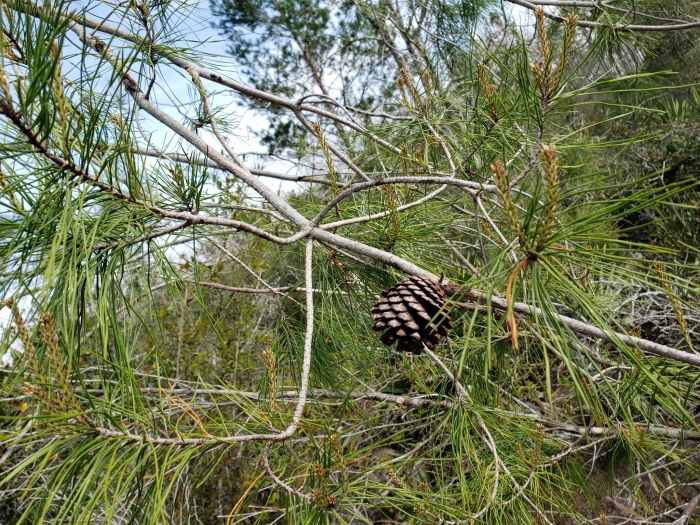Sand Pine
(Pinus clausa)
Sand Pine (Pinus clausa)
/
/

Arturo Santos
CC BY 4.0
Image By:
Arturo Santos
Recorded By:
Copyright:
CC BY 4.0
Copyright Notice:
Photo by: Arturo Santos | License Type: CC BY 4.0 | License URL: http://creativecommons.org/licenses/by/4.0/ | Rights Holder: Arturo Santos | Publisher: iNaturalist | Date Created: 2020-02-14T12:55:55-08:00 |

















































Estimated Native Range
Summary
Pinus clausa, commonly known as Sand Pine, is an evergreen tree native to the coastal plain sandhills, scrubby flatwoods, and dune ridges of the southeastern United States, particularly in Florida and parts of Alabama. It typically grows to a height of 15-55 feet (5-17 meters) with a width of 5-30 feet (1.5-9.1 meters). The Sand Pine has a variable form, often with a somewhat irregular or asymmetrical canopy due to its adaptation to the challenging conditions of its native habitat. It produces small, inconspicuous cones and has needles that are short and stiff, arranged in fascicles of two.
The Sand Pine is valued for its adaptability to poor, sandy soils and its use in stabilizing sand dunes and reforesting disturbed sites. It is also used as a Christmas tree in its native range. In cultivation, it requires full sun to light shade and well-drained, acidic soils. It is drought-tolerant once established, making it suitable for xeriscaping. While not commonly used in urban settings due to its irregular shape, it is an excellent choice for naturalized areas and coastal landscapes. Potential problems include susceptibility to pine beetles and root rot in poorly drained soils. It is not known to be invasive when grown outside its native range.CC BY-SA 4.0
The Sand Pine is valued for its adaptability to poor, sandy soils and its use in stabilizing sand dunes and reforesting disturbed sites. It is also used as a Christmas tree in its native range. In cultivation, it requires full sun to light shade and well-drained, acidic soils. It is drought-tolerant once established, making it suitable for xeriscaping. While not commonly used in urban settings due to its irregular shape, it is an excellent choice for naturalized areas and coastal landscapes. Potential problems include susceptibility to pine beetles and root rot in poorly drained soils. It is not known to be invasive when grown outside its native range.CC BY-SA 4.0
Plant Description
- Plant Type: Tree
- Height: 15-55 feet
- Width: 5-30 feet
- Growth Rate: Slow
- Flower Color: N/A
- Flowering Season: Non-Flowering
- Leaf Retention: Evergreen
Growth Requirements
- Sun: Full Sun, Part Shade
- Water: Medium
- Drainage: Fast
Common Uses
Bird Garden, Deer Resistant, Drought Tolerant, Fragrant, Low Maintenance, Rabbit Resistant, Salt Tolerant
Natural Habitat
Coastal plain sandhills, scrubby flatwoods, and dune ridges
Other Names
Common Names: Scrub Pine, Spruce Pine, Florida Spruce Pine, Alabama Pine, Sand-Kiefer, Pin Des Sables
Scientific Names: , Pinus clausa, Pinus clausa subsp. immuginata, Pinus clausa var. immuginata, Pinus inops var. clausa, Pinus virginiana subsp. clausa, Pinus inops subsp. clausa,
GBIF Accepted Name: Pinus clausa (Chapm. ex Engelm.) Sarg.